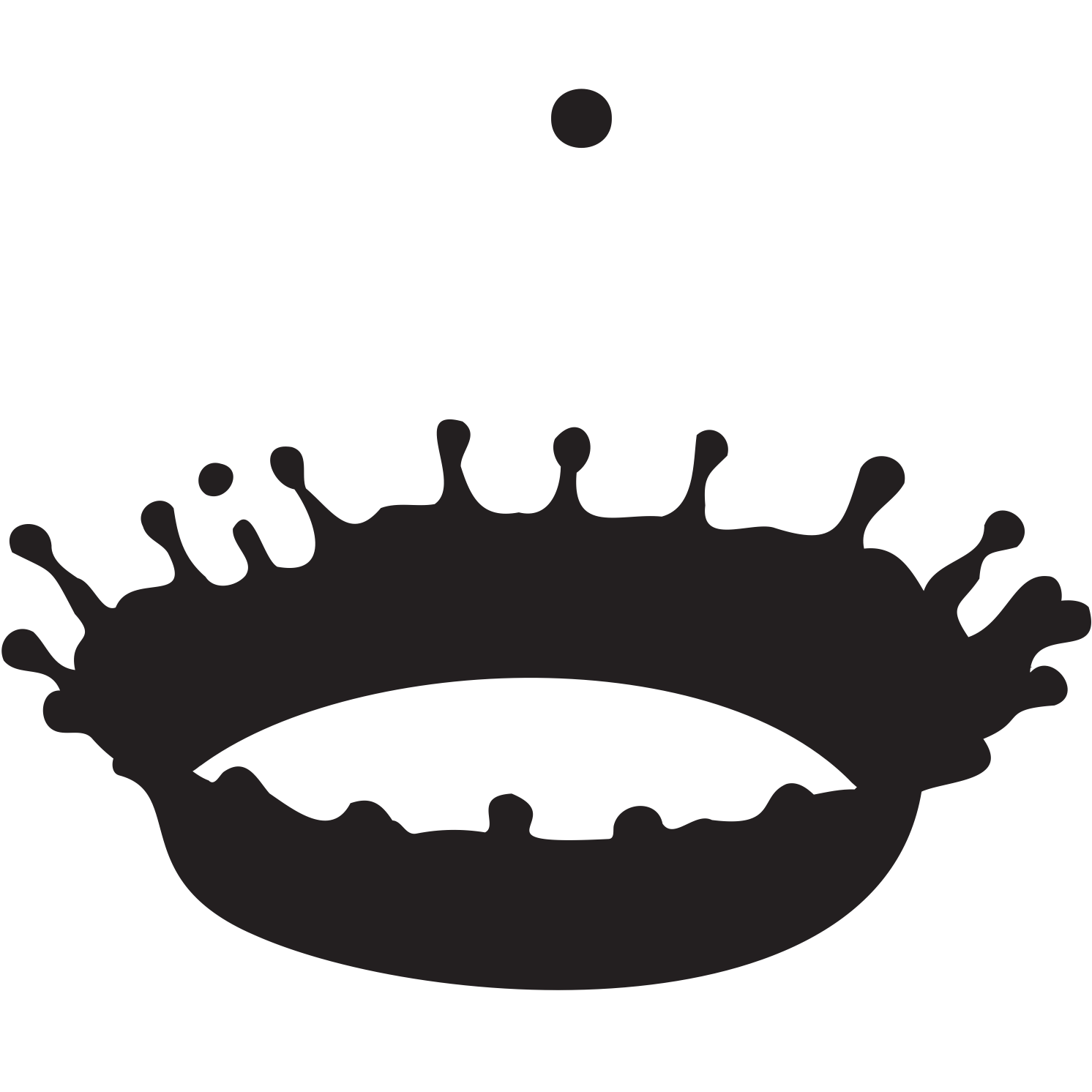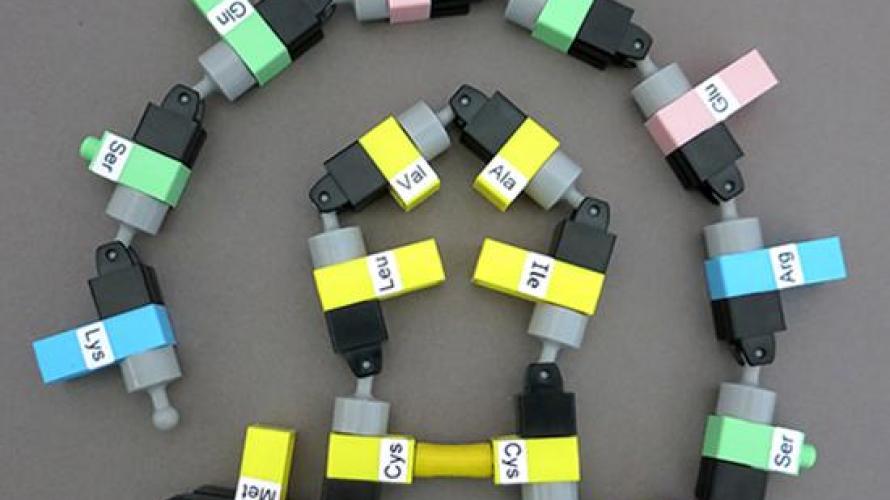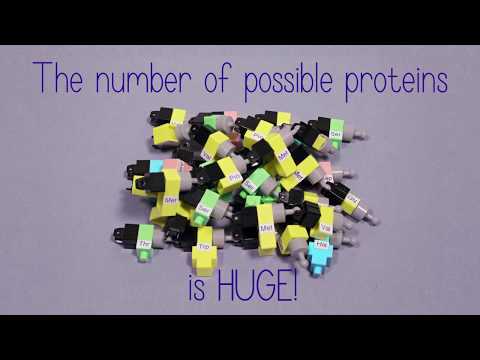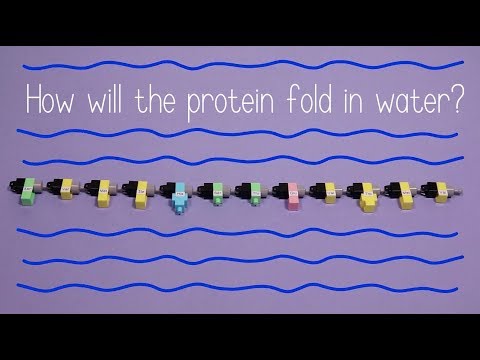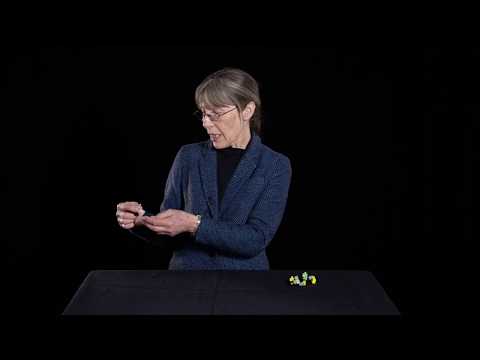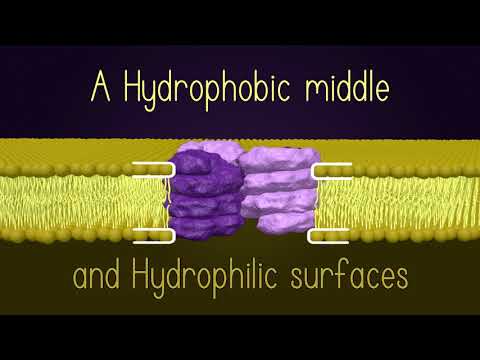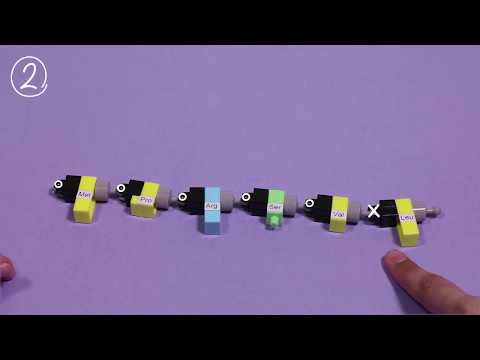Students can build and fold proteins, learn about hydrophobic and hydrophilic interactions, demonstrate all 4 levels of protein structure, create models of proteins they know like insulin, antibodies, and more.
Protein Set
Our models are designed to teach processes, in addition to structure. They are made to be manipulated so learners can perform cellular functions with their own hands. All booklets can be used for independent learning as well as classroom lessons. Download the flyer pack about the MIT Edgerton Center DNA and Protein Sets or watch the MIT Edgerton Center DNA and Protein Sets Intro Video.
Different concepts and instructional levels are organized into separate Protein booklets.
Protein Booklet 1 Activities:
- Name the parts of an amino acid
- Compare amino acid side chains
- Assemble your own proteins
- Fold a protein using hydrophobic and hydrophilic interactions
- Construct a channel protein
- Convert one protein into another by changing the amino acid order
Protein Booklet 2 Activities:
- Model all 4 levels of protein structure
- Assemble alpha helices and beta pleated sheets
- Create disulfide bonds and salt bridges in proteins
- Build and fold:
- Trypsin and Chymotrypsin
- Insulin
- Antibody
- Actin and Myosin
Short (2 min) instructional videos for students are available on our YouTube channel to support the activities:
- 14 Protein Kits
- 14 Protein Booklet 1: Introduction to Structure and Function
- 14 Protein Booklet 2: Advanced Protein Topics
- 14 Cell Membrane Mats
- 14 Trypsin Mats
- 14 Chymotrypsin Mats
- 28 Actin Filament Mats
- 14 Protein Card Packs
- Storage Crate
Download the Protein Contents List for photos and description of classroom set contents.
MIT Edgerton Center Teacher Guides, Resources, and Training:
- Teaching Essentials
- Protein Teacher Training Video
- Teacher Guide for the Protein Set
- 1. Curriculum Info and Ordering
- 2. Set Contents and Kit Management
- 3. Teacher Training
- 4. Lesson Preparation
- 5. Classroom Presentation
- Team Kit Care Record
- Protein Worksheet for Students
- Protein Worksheet Key for Teachers
MIT Edgerton Center Protein Set videos on our YouTube channel (Now with audio!):
- Introduction to Proteins (Protein Booklet 1: pages 3-9)
- Protein Folding in Water (Protein Booklet 1: pages 11-12)
- How Cells Make New Proteins (Protein Booklet 1: pages 13-18)
- Introduction to Channel Proteins (Protein Booklet 1: page 19)
- How to Fold a Helix (Protein Booklet 1: pages 20-23)
Next Generation Science Standards (NGSS):
HS-LS1-1. Construct an explanation based on evidence for how the structure of DNA determines the structure of proteins which carry out the essential functions of life through systems of specialized cells.
HS-LS3-1. Ask questions to clarify relationships about the role of DNA and chromosomes in coding the instructions for characteristic traits passed from parents to offspring.
HS-LS3-2. Make and defend a claim based on evidence that inheritable genetic variations may result from viable errors occurring during replication, and/or mutations caused by environmental factors.
The following additional resources are from organizations outside the MIT Edgerton Center. We have found they are excellent supplements to our curriculum and recommend their use with our lessons. Please contact the appropriate outside organization for questions about their resources, website, or proprietary information.
RCSB Protein Data Bank
The RCSB Protein Data Bank has an extensive educational online resource, PDB-101. PDB-101 is an online portal for teachers, students, and the general public to promote exploration in the world of proteins and nucleic acids. Learning about the diverse shapes and functions of these biological macromolecules helps to understand all aspects of biomedicine and agriculture, from protein synthesis to health and disease to biological energy.
The RCSB PDB Molecule of the Month by David S. Goodsell presents short accounts on selected molecules from the Protein Data Bank. Each installment includes an introduction to the structure and function of the molecule, a discussion of the relevance of the molecule to human health and welfare, and suggestions for how visitors might view these structures and access further details. This feature provides an easy introduction to the RCSB PDB for all types of users, but especially for teachers and students. We frequently use Goodsell images in our booklets.
The Protein Data Bank also has an excellent introductory video on proteins that covers the same material as our booklets.
Protein Teacher Training Video
This is a teacher training video for using the MIT Edgerton Center Protein Set (for use with the MIT Edgerton Center Protein Set, Protein Teacher Guide, and Protein Booklet 1). Training videos for the DNA/RNA and tRNA Sets are on their separate pages: DNA/RNA Sets, tRNA Sets.
Protein Videos on YouTube
Lesson Production Team
Kathleen M. Vandiver, PhD
Models and lessons
Amanda G. Mayer, PhD
Lessons and graphics



